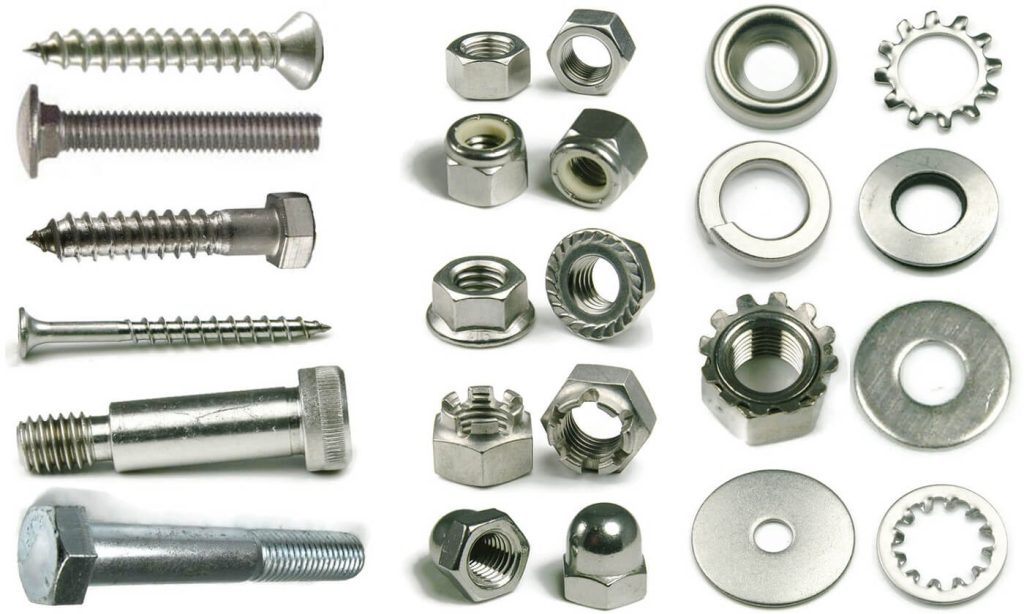When sourcing hardware for export or construction—especially fasteners like bolts, nuts, screws—you must be able to distinguish original, certified items from fake or substandard ones. Counterfeit fasteners pose real risks: mechanical failure, safety hazards, project delays, and legal liability. This guide empowers hardware shopkeepers and construction professionals with the knowledge and inspection skills to ensure only authentic, reliable fasteners enter the supply chain.

1. What Are Fasteners and Why Authenticity Matters
Fasteners (bolts, nuts, screws, studs) join structural elements in buildings, machinery, and infrastructure. Their integrity depends on:
- Material quality (carbon steel, alloy, stainless)
- Mechanical properties (tensile, yield strength)
- Manufacturing standards (ASTM, ISO grades)
Counterfeit fasteners often lack proper heat treatment, coating, or traceability markings—putting structures and users at risk.
2. Recognized Standards and Quality Marks
Fasteners must comply with standards that govern mechanical strength and traceability:
- ASTM A325/A490, A354, A194, A307 – widely used in structural and construction applications cpcco.hanford.govboltsupply.comFast-Rite International, Inc+5Engineering Express+5boltsupply.com+5
- ISO 898 – covers mechanical properties of metric fasteners regbar.com+2Wikipedia+2boltsupply.com+2
- SAE Grades (2, 5, 8) – identify steel quality via markings like radial lines boltsupply.com+1KELLY INDUSTRIAL SUPPLY, INC.+1
- Fastener Quality Act (FQA) – US regulation requiring manufacturer insignia and traceable records cpcco.hanford.gov+7NIST+7American Galvanizers Association+7
Key point: Authentic fasteners are permanently stamped with manufacturer ID & grade, per ASTM or ISO. Missing or hand-stamped marks are red flags cpcco.hanford.govEngineering Express.
3. Spotting Fake Fasteners: Quick Visual Checks
- Head Markings
- Should be crisp, uniform, and raised or indented, not scribbled or inconsistent.
- Compare with samples known legitimate (e.g. Grade 8 = six radial lines) KELLY INDUSTRIAL SUPPLY, INC.+1cpcco.hanford.gov+1.
- Manufacturer’s Logo
- Matches official stamps registered under FQA. Blurred or generic logos may indicate counterfeit WikipediaNIST+1American Galvanizers Association+1.
- Finish & Coating
- High-grade fasteners follow ASTM/ISO requirements for galvanising or plating. Inconsistent coating thickness or flaking is suspicious wmtr.com+2KELLY INDUSTRIAL SUPPLY, INC.+2boltsupply.com+2.
- Thread Quality
- Genuine fasteners have uniform pitch, clean thread edges per ISO/ASME specs. Misshapen or inconsistent threads suggest poor manufacturing.
- Weight & Dimensions
- Counterfeit items may weigh less or differ in size from true spec. Use calipers or gauges to verify.
- Packaging & Traceability
- Export-grade hardware should come with certified documentation: mill test certificates, lot numbers, inspection records per ASTM/ISO NISTASTM International | ASTM.
4. Testing & Traceability Beyond Visual Inspection
- Certification Records
- Manufacturer must retain records for ≥5 years under FQA NIST.
- Ask for proof: heat treatment logs, tensile test reports (e.g., ASTM F1470, ISO 898).
- Sampling & Lab Testing
- Use ASTM F1470 to randomly sample batches for verification ASTM International | ASTM+1Wikipedia+1American Galvanizers Association.
- Qualified labs perform tensile tests, hardness checks, coating thickness.
- Third‑Party Audits
- Use suppliers registered to ISO 9001 or IATF 16949 quality systems.
- These certifications often exempt them from FQA extras Wikipedia+1boltsupply.com+1American Galvanizers Association.
5. Beware of Fake‑Marking Tactics
Some counterfeiters take lower-grade parts and hand-stamp higher-grade symbols (e.g. stamping “B8” onto 18‑8 stainless) cpcco.hanford.gov.
Yellow flags:
- Dual marking – both embossed and inked marks.
- Slight design variations in grade fonts or trademark.
- Unapproved packaging or mixed branded parts together.
6. Best Practices for Shopkeepers & Exporters
- Maintain reference stock of genuine fasteners for comparison.
- Only source from reputable, certified suppliers with documentation.
- Refuse items lacking clear head marks, packaging, or traceability.
- Train staff to identify markings and inspect thread, finish.
- Maintain records of batches, supplier info, and certifications for audit trail.
- Keep updated with standards via ASTM, ISO databases, and IFI resources cpcco.hanford.gov+2boltsupply.com+2regbar.com+2regbar.com+5NIST+5cpcco.hanford.gov+5cpcco.hanford.govregbar.com+8Wikipedia+8cpcco.hanford.gov+8.
7. Verified Contacts & Useful Resources
- ASTM International (Pittsburgh, PA, USA) – standards and grade details.
- ISO Online Browsing Platform – search ISO 898 and related fastener standards American Galvanizers Association+5Wikipedia+5boltsupply.com+5.
- National Institute of Standards & Technology (NIST) – Fastener Quality Act FAQ info wmtr.com+2NIST+2American Galvanizers Association+2.
- Industrial Fasteners Institute (IFI) – head mark guidance and counterfeit bulletins Wikipedia+1cpcco.hanford.gov+1.
- Whole Building Design Guide (WBDG) – housing best practices and standard references: https://www.wbdg.org/
8. Summary Checklist
| Inspection Step | Must Check |
|---|---|
| Head Markings | Crisp, correct grade & manufacturer ID |
| Coating & Thread Quality | Even finish, consistent threads per ISO |
| Packaging & Docs | Certified labels, lot numbers, mill-test certificates |
| Batch Testing | Random tensile/hardness tests via ASTM F1470 |
| Supplier Verification | ISO 9001, IATF 16949, third-party QA audits |
Final Word
Ensuring the authenticity of fasteners protects structural integrity, safety, and reputation. As a hardware shopkeeper or exporter, your diligence in visual checks, documentation verification, and batch testing will build trust and minimize risk. Original, certified fasteners ensure your products meet both domestic and international market standards.
Also read – The Ultimate Guide to Fasteners: Top Choices & Buying Tips from Al Najim Al Muzdahir Hardware
